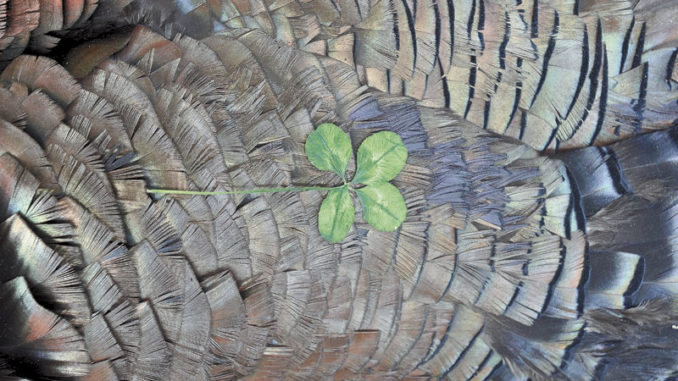
Successfully hunting turkeys is more than blind luck
Rich Shively is an old-school hunter, from the days when the only way of keeping his pants pockets dry was sitting on a newspaper as he was sitting against a tree. Now 79, Shively, maker of Super Yelper Turkey Calls (superyelper.com; 304-707-6168), has taken his last two toms from tent blinds.
“I was a runner-and-gunner,” Shively said. “I hunted turkeys 64 years by moving to get into a better position. It was the only way we knew to hunt them. I shot my first gobbler in 1957 and have made turkey calls for 43 years. I took at least one turkey each year for 23 years. But, when I moved to North Carolina, hunting flat fields was different from hunting the mountains of Virginia and West Virginia.”
Shively also suffers age-related eye problems. The combination of unfamiliar terrain and vision problems eventually caused him to go five seasons without bagging a gobbler. Grudgingly, he started hunting from blinds.
“I hunted with Steve Banks, who uses blinds,” he said. “The first gobbler I shot from a blind was on his property 6 years ago. I did it again last season when I was watching two gobblers and three hens in a field. Two of the hens fought until one went into the woods.
“Twice, a red-tailed hawk spooked the other hens and the gobblers into the woods. Sitting in a comfortable chair, I switched between cedar, walnut and cherry Super Yelper scratch box calls. What did him in was my Pro-Automatic push-pin. I could move when I wanted. And that made me believe in blinds.”
 Blinds keep you hidden
Blinds keep you hidden
Steve Banks, a Duke Energy retiree, lives in Wilmington. He invites several friends to his hunts. Now 71, he began hunting turkeys when the Jones County season opened in the 1990s.
“I didn’t know anything about turkeys,” he said. “I hunted along the Trent River with Dennis Hemby, who hadn’t hunted them, either. We hid behind a piece of military camouflage. He made a few calls, a gobbler came in, and Dennis shot him.”
In the late 1990s, Banks hunted in a tent blind in South Carolina with Dave Murrell. When he videoed the hunt, he realized blinds might hold the key. What clinched the deal was when he was back in Jones County, sitting in blow-down and called in a turkey flock.
“I thought I was hidden, until I saw a gobbler’s red head running by me because I probably moved,” he said. “Doghouse-style blinds were on the market and I set up three or four blinds wherever I saw turkeys on our properties. I bought them through after-season sales until I had 50 blinds. In 2000, I shot my first gobbler from a blind. I saw 50 turkeys fly down and a dozen gobblers fanning in a field. I put out a jake and a hen decoy and waited them out.”
Banks became so enthralled with turkey hunting that he is a Diamond Life NWTF member. Over the seasons, he switched to hub-style blinds and added swivel seats.
“At first, I used Ameristep doghouse blinds, but sometimes wind blew them down. Hub blinds are more durable, but more expensive. Bears tear up one or two each season. We use longer cords and up to 10 stakes per blind to prevent wind damage. Setting them in the edge of the woods, rather than in the open, also helps with the wind.”
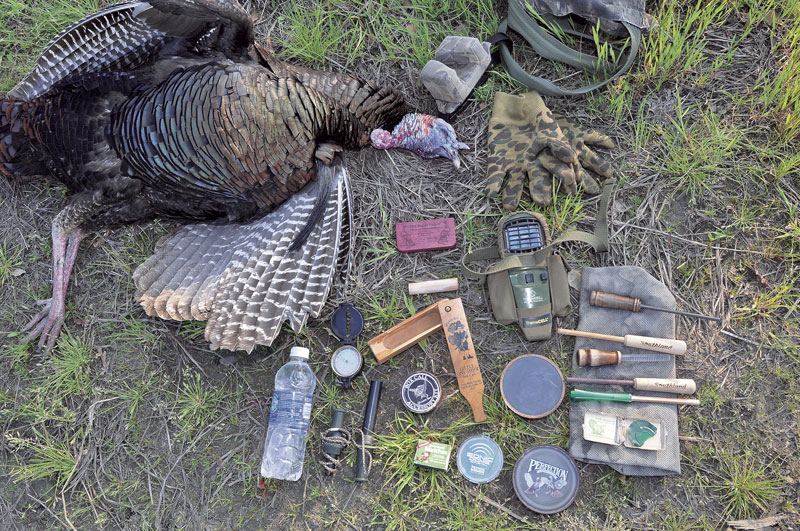
Hunter mistakes aren’t as crucial
Banks hosts youth and inexperienced hunters. Blinds shield their movements from sharp-eyed turkeys. He wards off mosquitoes with ThermaCELL insect repellent devices.
“I have killed gobblers that came to decoys and never made a sound and I wouldn’t have done it if I hadn’t been in blinds. Blinds also space hunters apart. If everyone is running and gunning, they can interfere with each other.”
Basil Watts is a 74-year-old retired Cape Fear River Pilot. He started hunting turkeys near Columbia, S.C. in 1973.
“You tried to get as close as possible to a gobbler without him seeing you and call him in, sitting down with your back against a tree,” Watts said. “I had some success, but had enough turkeys spot me to show me how impossible it is to sit still long enough in most situations. Some came silently. Sometimes gobblers other than the one I was calling to saw me. Hens busted my setup. Everything that could go wrong, went wrong. The 10 rules of turkey begin with don’t move. The other 9 are don’t move, which is impossible for as long as it can take for a gobbler to get close enough to shoot.”
Watts also used military camouflage before graduating to Gorilla adjustable-height blinds made of die-cut fabric. They allowed some movement.
Blinds offer comfort, safety
“I could reposition my gun below the fabric and push down the top edge with the barrel to shoot,” he said. “But, if you turned your head, you were still busted. When I leased property in Bishopville, I began using doghouse blinds overlooking a chufa patch and killed several gobblers.”
Watts has now used different hub blinds as they have improved. The fabric is better, the openings larger, the roof is higher and the zippers, poles and hubs are more durable.
“I like shoot-through netting,” he said. “Deer flies find the tiniest hole, making your hunt miserable near the end of the season. But netting keeps them out. It also prevents tent caterpillars from dropping down the back of your neck. You can’t sit still when they are crawling on you. A blind also keeps you warm when it’s cold and dry when it rains. Also, you can use the bathroom without spooking a gobbler.”
Watts sometimes hunts WMAs. He feels safer in a blind because another hunter can see the blind and back off. Also, another hunter can’t see any movements he makes, so he won’t be mistaken for a gobbler.
“A blind has downsides, too,” he said “It’s something extra to carry. So you hunt closer to the truck. Inside a blind, it can be hard to tell the direction of a gobble. If the gobbler is on the roost, I unzip enough windows and put my ear to them until I can hear where he is located. You also have to be sure no light is coming through a window behind you. If you break that beam of light, he will run the other way.”
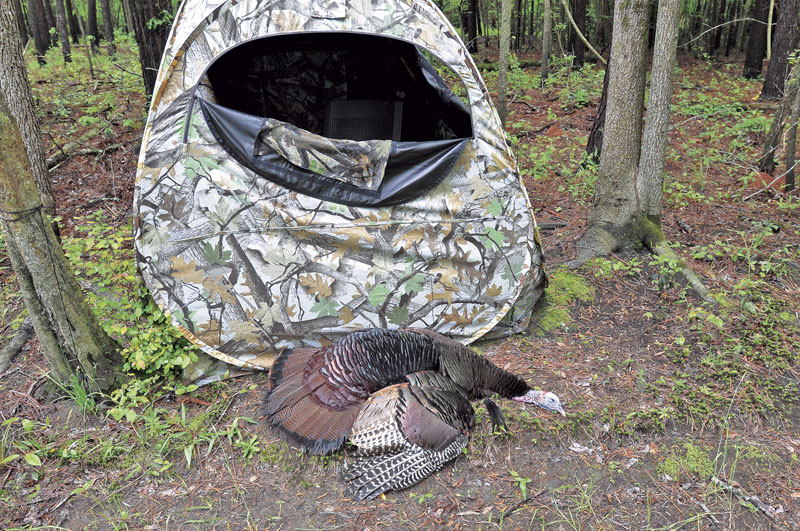
Tips for hunting turkeys with tent blinds
Before entering a blind that has been set up overnight or longer, check for black widow spiders, fire ants, wasps and snakes before entering.
Use Repel camp fogger to ward off mosquitoes, ticks and deer flies and gnats. Apply Bengal odorless fire ant insecticide to nearby mounds. Fire ants may relocate to a tent blind.
Apply aerosol silicone tent waterproofing to maintain water repellency.
Carry a Tear-Aid fabric repair kit for sealing rips and raveled seams.
Use self-stick Velcro to hold tent window flaps in position.
Spray black aerosol paint to cover scratches on the blind’s interior light-preventative coating.
Lubricate zippers and snaps with E-Z Snap zipper lubricant or surfboard wax.
Keep extra stakes, lines and a stake hammer in the tent’s carrying bag.
Cut a piece of bamboo, river cane or bailing wire to provide a temporary replacement for a broken roof support.
When taking a shot, make sure the muzzle is outside the blind. A blast fired inside the blind can be deafening. Better yet, wear ear plugs or an electronic sound attenuating and enhancement device such as those made by Walker’s Game Ear.
Use several different types of chairs. Lightweight folding chairs are best for single-day hunting portability. Heavier and less portable patio or swivel chairs provide more comfort for long-term setups.
For long hikes beyond closed gates on public lands, use a deer cart, pier cart or folding garden cart to carry heavy blinds and chairs.

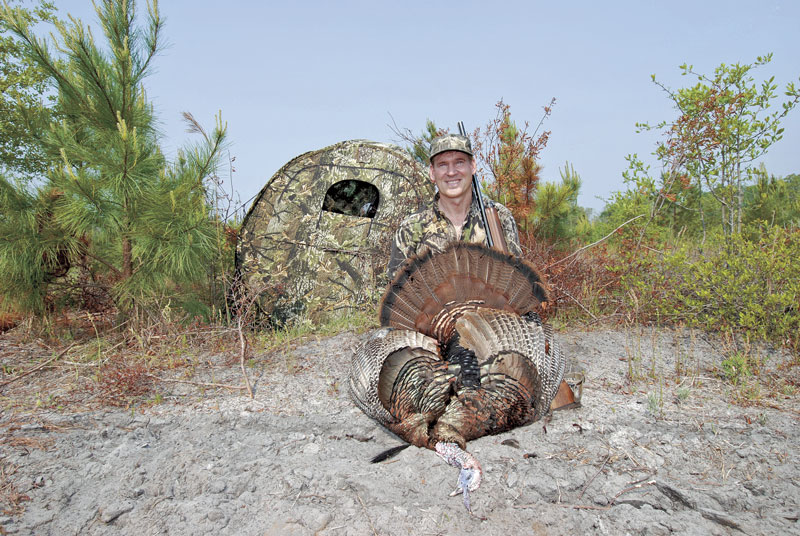

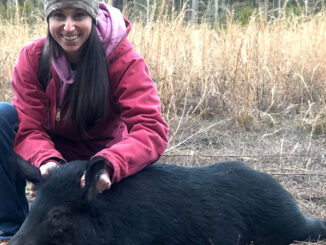



Be the first to comment